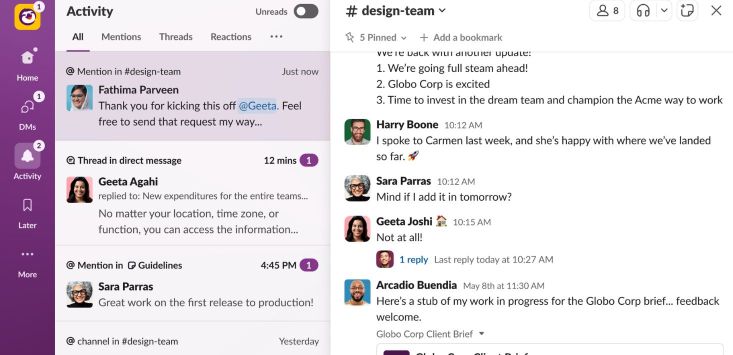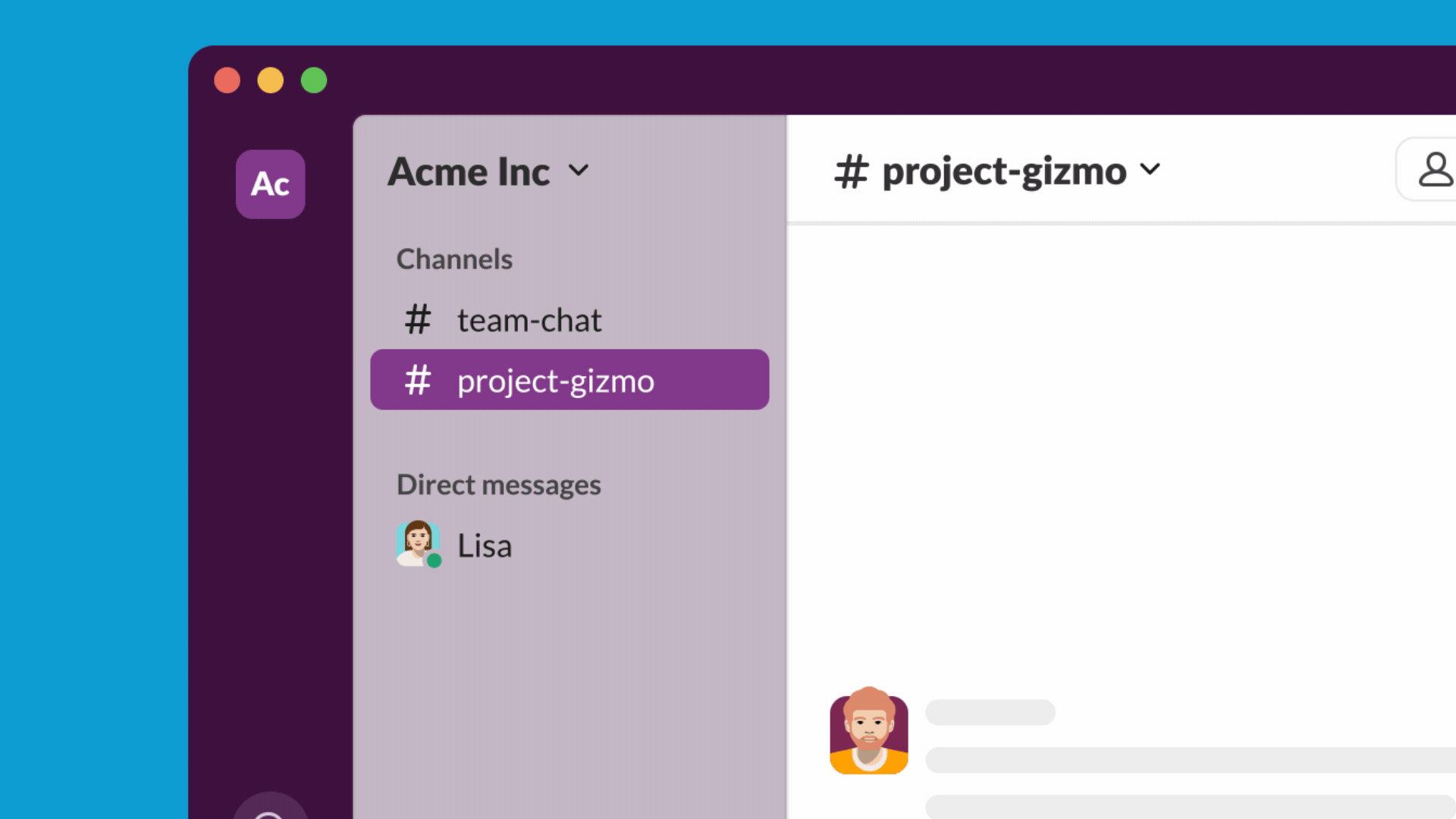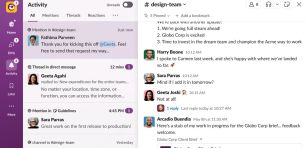
Image: Slack
Slack has just announced a bit of a facelift that will change some of the ways you interact with the platform. And I’m convinced that social media had a strong influence here.
There’s definitely some big changes here that may take a little getting used to. But according to Slack, the changes were based on what its customers want from the platform.
“As we look at the evolution of Slack, we are very customer-obsessed,” Tina Chen, Senior Design Director at Slack, said on a call with SmartCompany.
“Whenever we deliver any new features or capabilities, we’re always looking at user feedback and looking at how we can improve the overall experience.”
Get daily business news.
The latest stories, funding information, and expert advice. Free to sign up.
There are three main cosmetic changes being introduced to Slack, and most have to do with the left-hand view of the app.
Presently, the left-hand navigation has a vertical list of workspace tiles for people who use Slack for more than one workspace.

Image: Slack
The changes will now collapse the tiles and the sidebar will instead be dedicated to different views that allow users to focus on a specific area of work.
The search function has also been moved into this area and the ‘draft message’ button has been rebranded to ‘create’. Clicking on this will now allow you to create a message, huddle, canvas or create an entirely new channel.
Icons have also changed to be more streamlined with Channels, Files, People, Slack Connect, and Apps being replaced with DMs, Activity, Actions, Later and More.
The likes of Threads, Mentions, and Reactions will no longer be their own menu items. Instead, they will be found under the dedicated Activity view. Within there they will each have their own tabs.
This is similar to the Later view — which has already been available for a little while and allows users to essentially snooze things. It has tabs for actions that are in progress, completed and archived.
According to Slack, the lefthand navigation we’re familiar with will be tucked into these new views. Clicking into one, DMs for example, will reveal a feed that can then be actioned.
The entire new Slack experience is, according to the company, anchored in the Home view. This will feel familiar to the current Slack experience. The Home view will allow navigation with channels, unreads, drafts, and more.

Image: Slack
There are also a few extra updates for the platform, which include:
- Hover functionality, allowing users to hover over each dedicated view to monitor activity quickly without having actually open.
- An update to the iPhone app which has tiles at the top for easy access to Unreads, Threads, and more. A swipe interface is also being added so you can triage unread items on the go.
“We reorganised a bunch of things to help users more easily find and get to their essential tools,” Chen said.
“A lot of it was reducing the amount of navigation, clicking, and remembering where things were. That was the theme of a lot of this work.”
Slack’s new look reminds me of social media
While streamlining and organising are at the heart of Slack’s messaging here — what I also see is influence from various social media platforms.
The changes, along with the less cluttered look, seem like an evolution from a platform that is channeling something like Discord to one that wants to be a little more simplified and chic.
The focus on icons in particular offers whispers of LinkedIn and Twitter. Even renaming Direct Messages to the more widely used ‘DMs’ feels like a push for modernity.
But what it’s truly reminiscent of is Facebook Messenger, particularly when you take a look at the DM view. The case for this is even stronger when you consider the new hover function. This allows users to engage in a version of Messenger’s worst-kept secret – long pressing on a Facebook Messenger chat so you can preview it without actually notifying others you’ve actually ‘seen’ it.
Specific inspiration aside, everything about the new-look Slack seems designed to be more convenient, aesthetic and digestible. And while there is a solid argument for these to be productivity decisions, I just can’t shake the notion that social media had an impact here.
The new Slack seems purpose-built for people who are used to a fast-paced online environment. And that’s before you even take into account the push for AI integration into the platform.
Chen says that social media wasn’t a specific inspiration for the changes, but that it seems to have informed how people have interacted with them.
According to Chen, people intuitively knew how everything worked even during the first round of user tests.
“We didn’t even have labels to start with but they were like ‘yeah I can guess what all of these things do.'”
“These are extremely familiar patterns. When people have a flow of fast-coming information, like social media as well, these are pretty common patterns.
“But we try and look at it through the lens of what you need to get work done. And I just think that it’s a nice bonus that these things should be really familiar.”
Handpicked for you

Slack is evolving to look more like a social media platform




COMMENTS